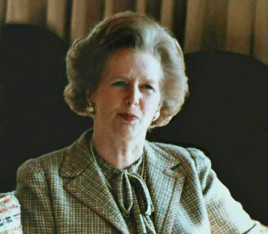Christian Stensrud writes: In the week of Margaret Thatcher’s funeral, it is perhaps worth reflecting on one of the most contentious policy areas influenced by the Thatcher government – that of welfare.
The Thatcher government’s objectives were to revive market liberalism within the public sphere, and to create the appropriate conditions for a ‘free’ economy by limiting the boundaries of the state while strengthening its authority. It was to be expected, therefore, that Thatcherism would conflict with the redistributive and, some would say, leftist ideology of the welfare state. When Margaret Thatcher came into office in 1979, radical cutbacks to the welfare state (which she saw as an indicative source of the economic and social problems of the U.K.) were anticipated.
But was this talk of ‘rolling back the state’, of less state intervention and lower levels of public spending actually translated into practice?
There were instances of significant welfare retrenchment, primarily in pensions policy and housing, but not to the extent that was expected, and it was no way near a complete dismantling of the welfare state.
The NHS, for example, though a constant target for the Thatcher government, was one that it had to back off from due to growing public discontent. Indeed, by 1989 the Thatcher government promised ‘the NHS is safe with us’, which was a remarkable turn.
Interestingly, public spending, as a percentage of GDP, actually rose during the first 3 years of Thatcher’s government. And total social expenditure as a share of GDP remained almost unchanged from 1979-1990. Even more surprisingly her last term ended with more of the workforce employed in the public sector (23.1%) compared to today (20%). Why was this? Surely one of the key tenets of the Thatcher operation was to reduce the role and size of the state.
The Monetarist polices of the Conservatives led to a record high in unemployment of 11.9% in 1984 (not seen since the Great Depression), and this clearly meant more people claimed benefits. But it does not explain the growth in, say, health spending during the Thatcher administration, so let’s dig a bit deeper.
In the post-war years the expansion of the welfare state, and its increasing generosity, created enduring popular support. This huge popular support was primarily aimed at core programmes such as pension initiatives and unemployment benefits. But, interestingly expansion also created a constituency in the form of interest groups, such as pensioner organisations and disability groups, who could mobilise against threats to the status quo, Politicians intent on cutting welfare expenditure, had to pursue unpopular policies under scrutiny from voters and newly entrenched interest groups created by the previous 30 years of welfare expansion.
The two major welfare cutbacks implemented by the Thatcher era government add foundation to this claim. The privatisation of public council housing was the exception to the rule that all welfare cut backs are unpopular (it was promoted as a gain rather than a cut), and cuts in pension allocation were not faced by a huge public outcry because the pain was reduced by personal pensions. Perhaps these were simply ‘low hanging fruit’ and the Thatcher government was unable to inflict as much change on the welfare state as it wished, for fear of being held accountable for initiatives that were vastly unpopular. After all, the Community Charge (Poll Tax) , which would have crippled the social spending of local authorities by cutting their finances, can be seen as a plan for welfare retrenchment. It was certainly a major influence on Thatcher’s decreasing popularity.
Welfare curtailment was not nearly as severe as promised by the Thatcher cabinet and the changes enforced pale in comparison to the changes the administration made within the industrial sector and privatisation of the nationalised industries. But the lesson of the Thatcher administration for future governments was that welfare retrenchment is possible so long as you transform it into a tangible benefit – as was the case in the privatisation of housing and the pension reforms.
Editor’s note: you may also be interested in looking at a paper by economist, Stewart Lansley, Fellow of the Townsend Centre for International Poverty Research at Bristol University and author Joanna Mack, on The Thatcher Inheritance. Lansley and Mack say, “What is clear is that the levels of inequality and poverty have both increased substantially. Since 1979, a greater share of the nation’s income and wealth has gone to top income groups, and in particular the very top, than in the period before 1979.”


Subscribe with…